Franky Strachan – 10 April, 2013
Any narrative which may have been conveyed by the underlying photographs has been vibrantly disrupted and estranged by Chong's painterly interventions. They are surreal insofar as they reduce people and objects to static shapes occupying alienated pictorial spaces, and they have a Pop appeal. In the context of this exhibition, however, they signal mass culture being addressed in a post-modern context rather than via the kitsch, commercial or ironic discourse of Pop.
Dunedin
Liyen Chong
Enkyklios (or Pedagogical Experiments)
27 March - 20 April 2013
Notions of cultural displacement permeate Auckland-based artist, Liyen Chong’s work. Already renowned for her delicate handling of assorted media - from found crockery to the embroidery of human hair - Chong’s current exhibition at The Blue Oyster Gallery serves to confirm her aptitude for sophisticated conceptualism.
In Enkyklios (or Pedagogical Experiments) the artist presents nine framed works and a digital video. The term ‘enkyklios‘ is one of the Greek words from which our phrase ‘encylopaedia’ is formed, (enkyklios + paideia); the exhibition is so called because it is centred on the contents of an encyclopaedia which was published in the 1970s.
Chong has scanned and enlarged a selection of images from the almanac and reworked them using acrylic paint and gold and silver leaf. Firstly, she has painted over, or filled in, the identificatary features of the characters within the pictures (be they sheep, dogs, humans, or bullocks) using flat block colours: purples, pinks, greens, blues, golds, silvers and black. Secondly, she has placed filled circles (of the same colour range) across the images. These are organised, either, so as to fit a particular shape within the composition (appearing like patterning upon a hat or a dress), or, so as to seemingly hover on the surface, as would marks made by Lichtenstein or Hirst, though Chong does not necessarily quote these artists.
On a visual level, these works have finesse. The circles, or dots, draw attention to the mixed media approach they embody while at the same time advertising the twentieth century tenet of faithfulness to the picture plane. Any narrative which may have been conveyed by the underlying photographs has been vibrantly disrupted and estranged by Chong’s painterly interventions. They are surreal insofar as they reduce people and objects to static shapes occupying alienated pictorial spaces, and they have a Pop appeal, owing to the simplification of forms via undiluted colours. In the context of this exhibition, however, these characteristics signal mass culture being addressed in a post-modern context rather than via the kitsch, commercial or ironic discourse of Pop.
On a conceptual level, the content of these images is appropriately ambiguous. Recognizable scenarios are presented - a catholic priest conducting an outdoor service, bullocks preparing to plough, an oil rig rising from the middle of the ocean - but their iconicised presentation within Enkyklios draws attention to the traditions which fortify their existence. The colours which blot out the features of the faces simultaneously blot out notions of individuality. What we are responding to, then, is not an individual of an identifiable age, ethnicity or gender who is acting within a specific set of circumstances, but rather, the representational cues which predetermine the scenario for us.
For example, in They are usually wearing white we see only the parable of the active sportsman in uniform, instead of say, seeing a known tennis player hitting the ball within a particular game. The very title of this piece underlines the standardizing diction of encyclopaedic entries: ‘they are usually wearing white’ cultivates and confirms the normalcy of this sporting ‘type’ within, in this case, western culture. By removing the player from the court, Chong has isolated the figure as an icon - his new black backdrop with blue circles radiating from the centre puts him in a, dare I say, ‘magical’ sphere. He is removed from that which gives meaning to his actions and yet the majesty of his myth endures, signalling that it has a metaphysical resonance with those who recognise it (be they sportspeople or otherwise).
The deconstruction of cultural icons, mythology, and discourses, continues within each of the works and “Let us begin time” said the old man as he sped from darkness to light (with Age, Fertility, Death and Binary Systems”) is a fantastic example of the knowledge base upon which Chong functions. The first thing to register is that the title references allegorical art (Bronzino’s Venus, Cupid, Folly and Time (c.1545) or Titian’s Allegory of Time Governed by Prudence (1565) may serve as examples). The second thing which strikes you is the phrase ‘binary systems’ and here the (post-structuralist) alarm bells resound.
This image and its pointed title refer to the rhetoric of cultural progress which underpins the thinking found in many an antiquated digest. It pinpoints the black/white binary within which black is ‘primitive’ and ‘negative’ and white ‘modern’ and ‘positive’. The image presents a man with sheepdogs resting literally all over him while he sits on a motorbike.
Above are two relatively large dots: the left black, the right white. This connotes a left-right transition; the artist is appraising linear ‘progress’ from dark to light, bad to good, primitive to modern. The motorbike is painted out in gold, perhaps as a reference to pecuniary value systems, and if the canines are recognised as sheepdogs - that is, dogs which contribute to industry - a critique of capitalism and industrialization may be established.
Each image can be analysed in this manner with each image addressing the way in which the encyclopaedic text, and ultimately the viewer frames such notions as the cultural ‘other’, the natural world, industry and progress, or humankind. Within the scope of this article however, it is sufficient to say that the nine works displayed commendably present the beholder with (relevant) questions rather than answers, and are, mercifully, inviting works of art rather than items of impenetrable intellectualism. That said, it is possible to turn to the digital video aspect of the exhibition.
Encyclopaedias, owing to new research and revisionist studies, are constantly being outmoded. The prescriptive power of language and the myths we, often unwittingly, cultivate in speech, locate the subject and the speaker in terms of power. Just as an artist has the capacity to aestheticise and objectify their subject on a visual level, so too can language reduce the complex movements of people to simplified formulae. With this in mind, Chong’s digital video confronts linguistic pigeonholing and idiomatic assumptions.
Subject and Object is five minutes and it is silent. Words in a bold clear font scroll horizontally along the bottom of the otherwise black screen. These are short phrases from the encyclopaedia and they accompany the images in the main gallery. (The Blue Oyster has a separate A.V. room which links onto the main gallery and given this position, audiences are likely to have viewed at least a few of the images before entering).
This is significant because the phrases give voice to the illustrations whilst establishing, or confirming, the inherent post-structuralist angle of the exhibition. The viewer looks through the shapes of the scrolling letters to catch glimpses of the images from the main exhibition. This underscores, in a most literal manner, the way that language frames perception whilst at the same time stressing how cultural myths represent and objectify the world around them. In more specific terms, the video reads as something of a cautionary tale. It tacitly reminds us that that the contents and categories of encyclopaedic texts are theoretical guides only; they are in flux and they are not universal.
When all is said and done, the reader should not depart in the belief that Enkyklios (or Pedagogical Experiments) is exceptionally sceptical, excessively intellectual, or saturated in cultural doubt and mutiny. The space is calm and engaging, and the exhibition without expectation or agenda. It is a display of words and ideas that will resonate with those who grew up thumbing through encyclopaedic tomes, slowly absorbing ideas about the world while developing a sense of their position in relation to it.
Chong has produced aesthetically pleasing, heavily considered images, which simultaneously delight and defy the beholder. Layered media reflects layered content and iconographic ambiguities invite dialogue and exploration. By questioning the means through which cultural mythology affects our being, the artist invites the viewer to go around this exhibition and back again, seeking the compound ways that they relate to the encyclopaedic paradigms displayed.
Franky Strachan
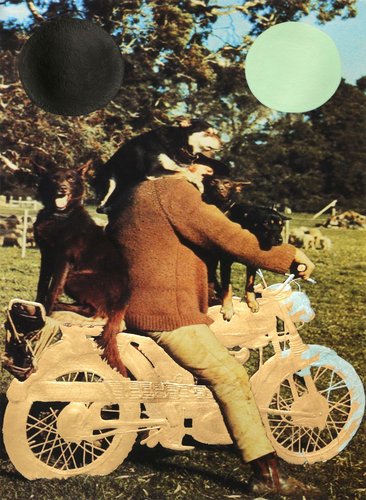
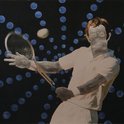
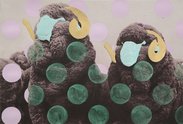
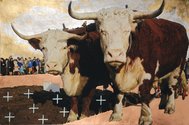

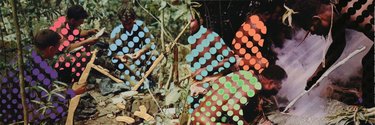
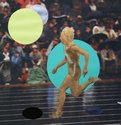

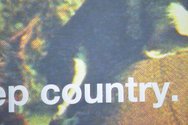
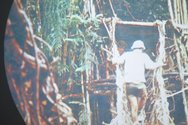
 Advertising in this column
Advertising in this column Two Rooms presents a program of residencies and projects
Two Rooms presents a program of residencies and projects
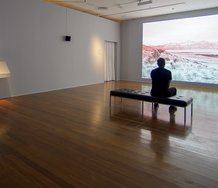
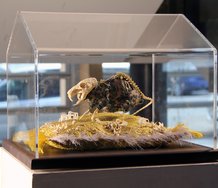
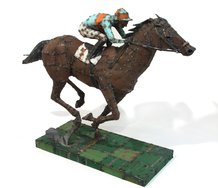
This Discussion has 0 comments.
Comment
Participate
Register to Participate.
Sign in
Sign in to an existing account.